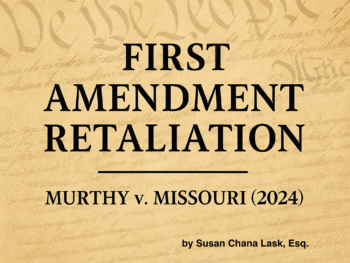FDA Orders Stronger Warning Labels for Ambien, Other Sleep Drugs
By DAN CHILDS (@DanChildsABC)
ABC News Medical Unit
March 14, 2007
Rosalind Cartwright is no stranger to sleep.
Cartwright, a professor and chair of the department of psychology at Rush University in Chicago, has researched sleep for the past 40 years and written numerous studies on dreams and slumber.
But last September, she experienced a sleep-related anomaly that even she can’t entirely explain.
“That night, I have no idea what happened, except that I found myself on the floor at 3:30 a.m.,” she says. “I was really hurt badly, but I crawled back into bed and went to sleep.”
When she woke up to her alarm three hours later, she discovered that she was bleeding and in serious pain.
She says a trip to the emergency room revealed that during the night she had somehow managed to sustain four pelvic fractures, three broken ribs, a fractured left wrist and a nasty bump on the head that led to bleeding on her brain.
Cartwright says she has neither a personal nor family history of sleepwalking. But she believes that an interaction between the sleeping pill Ambien and an over-the-counter cold medicine she had taken earlier that night caused her to leave her bed and injure herself.
Cartwright’s experience, though rare, is not unheard of.
Partly in response to such reports, the U.S. Food and Drug Administration urged sleep drug manufacturers Wednesday to strengthen their package labeling to include warnings of sleep walking, “sleep driving” and other behaviors.
The FDA will also require additional warnings of the potential for allergic reactions with the use of the drugs.
Are Sleeping Pills Dangerous?
Sleeping pills, in general — and Ambien, in particular — have come under increasing scrutiny over the past year.
A class action lawsuit against Sanofi-Aventis, the maker of Ambien, was filed on March 6, 2006, by those claiming that they engaged in a bizarre variety of activities while asleep after taking the drug — from binge eating to driving their cars while asleep.
And the unusual side effects of the drug made national headlines on May 5, 2006, when Rhode Island Rep. Patrick Kennedy smashed his Ford Mustang into a barrier near Capitol Hill. He later released a statement saying that he had been disoriented by two prescription medications he had taken, one of which was Ambien.
Additionally, the FDA has uncovered more than a dozen reports of sleep driving, all linked to the drug.
Physicians say that though Ambien, Lunesta, Rozerem and similar sleep drugs are still safe in most cases, the stronger labeling is a step in the right direction.
“All effective drugs always have side effects, some of which can be potentially harmful,” says Dr. Emmanuel Mignot, professor of psychiatry and behavioral sciences at the Stanford University School of Medicine.
“As these are discovered or even suspected, it is best to err on the side of caution so that the public and doctors can appropriately react if these side effects do occur.”
Dr. Marc Siegel, an internist and associate professor of medicine at New York University, says he has seen only a few cases so far involving allergies and “hypnotic-type behavior” with the use of these drugs.
“Still,” he says, “I am OK with the stronger labeling, because these complications, though rare, are possible, and too many patients take these drugs too easily on a regular basis.”
Doctors Debate Effect of Labeling
Even as the FDA pushes for stronger labeling, the agency maintains that sleeping drugs do not pose enough of a health hazard to warrant pulling them off pharmacists’ shelves.
But some say that a labeling change will likely have little effect on the use of these drugs, which accounted for more than 45 million prescriptions in the United States in 2005.
“It’s good to have the information available for patients, though I think they are so inundated with drug-related information that they are not in a position to interpret,” says Dr. Greg Anderson, assistant professor of family medicine at the Mayo Clinic in Rochester, Minn.
“As a result of the volume of cautions and warnings on medications, as well as the difficulty they have with interpretation of actual risks, I have a hunch that most people do not bother to read the pharmacy handouts.”
Dr. Melvyn Sterling, an internist practicing in Orange County, Calif., agrees that the labeling change may not make a huge impact in overall use.
“The product labeling changes appear reasonable, but I doubt that it will have much of an impact on the use of these medicines,” Sterling says. “Patients who suffer with insomnia are likely to be willing to risk the adverse side effects noted, particularly since they are quite uncommon.”
And the relatively rare nature of the side effects has some questioning why other drugs with similar side effects are not also subject to stricter labeling.
“What may be disappointing is that the labeling does not cover a large number of compounds that are commonly used off-label as hypnotic in clinical practice,” Mignot says, noting that prescriptions for over-the-counter sedative drugs, sedative antidepressants and antipsychotic drugs may represent almost as many prescriptions as leading sleeping pills developed for insomnia.
“Whereas there is no data in this area, I would not be surprised if these other drugs can produce similar complications.”









